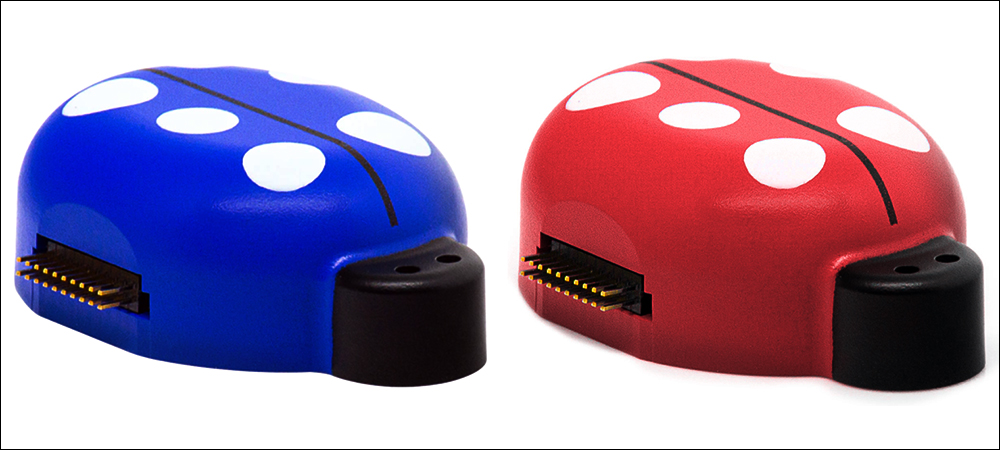RFID Journal LIVE! 2023 will feature end-user companies discussing RFID’s use in various industries, as well as exhibitors offering IoT solutions including those based on machine learning. To learn more, visit the event’s website.
- BLE and Wi-Fi Connectivity for Sensor Data
- Aiding the Development and Testing of IoT Solutions
- Version 2.0 Lowers Power, Adds Machine Learning
- Additional Applications for the Technology
Chip company TDK InvenSense is preparing to release its second-generation Internet of Things (IoT) solution prototyping device, known as SmartBug 2.0, that includes sensors and wireless connectivity. What makes this version distinct from its predecessor, according to the company, is a longer battery life due to low-energy sensors, as well as built-in machine-learning software.
TDK InvenSense manufactures microelectromechanical system sensor platforms for the IoT and other applications, which universities, startups and manufacturers can use to develop and test new solutions and products. The SmartBug is a compact, wireless multi-sensor solution designed for commercial and consumer IoT applications. The system, according to TDK InvenSense, is built to be quick and easy to deploy without requiring programming, soldering or modifications.

TDK InvenSense’s SmartBug
The company launched the original SmartBug sensor module in 2019; that version is blue, while its successor will be red. The SmartBug leverages multiple sensors, as well as Bluetooth Low Energy (BLE) and Wi-Fi connectivity. The sensors include TDK InvenSense’s six-axis inertial measurement unit gyroscope and accelerometer, along with a magnetometer and pressure, temperature, humidity and ultrasonic sensors.
BLE and Wi-Fi Connectivity for Sensor Data

Sahil Choudhary
The system comes with its own algorithms to interpret the collected sensor data. These algorithms include sensor fusion, filter monitoring, asset monitoring, gesture detection, activity classification, air mouse monitoring, and smart door open or closed detection. The device can also accommodate SD card-based data logging for IoT applications with large data volumes, according to Sahil Choudhary, TDK InvenSense’s director of product management.
For connectivity, the SmartBug module was designed to provide remote monitoring so that developers can view the sensor data wirelessly, wherever they may be located. It runs the relevant algorithms, while Nordic Semiconductor‘s MCU with BLE 5.2 forwards that data to a free Windows 10 application. Streaming of smart sensor data is also available via USB, while it comes with support for add-on cards with SD card logging and ultrasonic sensors. The SmartBug features a Wi-Fi chip from Espressif for use in scenarios for which expanded wireless data streaming or longer transmission ranges are necessary.
Among the sensors, the magnetometer comes with compass data collection to detect orientation heading, as well as magnetic anomaly detection for asset-monitoring applications. A Sensirion humidity and temperature sensor logs humidity- and temperature-based events for asset condition monitoring applications. “We made the SmartBug specifically for the IoT markets as a dedicated data-collection module,” Choudhary says, for companies building IoT systems. “Getting trusted data from so many sensors was a pain point we saw with many of our customers,” which led to SmartBug 1.0.
Aiding Development and Testing of IoT Solutions
Users who put the SmartBug on an asset in transit can view basic data about that item from the device’s built-in software, such as how many shocks it experienced, if it fell down, and if it was exposed to a magnet or changing temperatures. Typically, the system can amass four to five hours of information.
The SmartBug has a 300-milliamp lithium polymer battery, the company reports, so if users were only sending data via BLE rather than saving data or streaming via Wi-Fi, with an application using data from only a single sensor and one software algorithm, the device could run on that battery for 10 days. Users can deploy the SmartBug sensors to test their own solutions during the development process and beyond, while the devices are not part of a company’s finished product.
“We are helping those companies to actually collect data from multiple sensors, understand what chips they want to use [and] understand what software they want to use” Choudhary explains, “and then that helps them build that actual product that they want to deploy.” That makes SmartBug an enabler, he says. “We want to help the product manufacturers in our world, who are our customers, to build their products.” Many customers using the technology are students and software developers, and a larger percentage of American universities are employing the device in their classrooms or labs.
Version 2.0 Lowers Power, Adds Machine Learning
With version 2.0, slated for release this spring, users can collect data in the same way. However, this iteration offers a longer battery life with the ICM-45696-smotion sensor that is almost three times lower in power compared to the previous one. That enables users to run the device for hours or days longer, Choudhary says. Additionally, the 2.0 sensor can run basic machine-learning models on the chip.
“When we think of machine learning, traditionally you’re running it on a big processor,” Choudhary explains, “but what we’ve been able to do is create a machine learning model and run it on the sensor.” Thus, if someone wanted to test a prototype using the machine-learning solution, they could view the result of how a model they’d created would operate in a variety of applications, practically in real time. In that way, Choudhary says, they could test various potential use cases and view how the device would support them.
The SmartBug measures 36 millimeters by 50 millimeters (1.4 inches by 2 inches) for both versions. Users would need to purchase the sensor device, as well as download the related app or access the software on the Microsoft Windows 10 platform. Choudhary cites a case in which a developer was testing whether technology could monitor people waving their hands in front of a device, either in an upward or downward direction, to identify an activity using machine learning.
“There are all kinds of unique use cases they were able to detect,” Choudhary says, “using a very low-powered machine-learning model on that chip.” That could include a hand-hygiene solution for hospitals, which could ensure workers had washed their hands before meeting with a patient, based on whether or not they’d placed them under a faucet.
Additional Applications for the Technology
Other use cases include tracking the position of an individual’s head when that person wears headphones or ear pods. With a SmartBug on the headphones, the system could track how that person was moving their head. Several companies are currently building spatial audio algorithms based on positioning data to improve audio experiences.
A company in China is employing the SmartBug to test a solution that tracks the efficiency of food service robots in restaurants, enabling them to track how efficient their entire throughput is while they’re serving food to customers. And in the United States, the technology has tracked carts in an airport for commercial flights, as well as monitoring packages transported by carrier flights.
In addition, the technology has been used for patient activity monitoring at hospitals to understand patients’ conditions, including how they are recovering from an injury based on sensor readings. Yet another use case has involved tracking conditions around windmills, to identify the energy efficiency of turbines. “There are many use cases,” Choudhary says, that he expects to expand further with the latest version of SmartBug. Version 2.0 of the system is expected to be released by May of this year.
Key Takeaways:
- Version 2.0 of the SmartBug prototyping tool comes with improved power management and onboard machine learning.
- Companies can now use the device to build and test IoT solutions ranging from wireless headset systems to healthcare monitoring and door-lock management.

